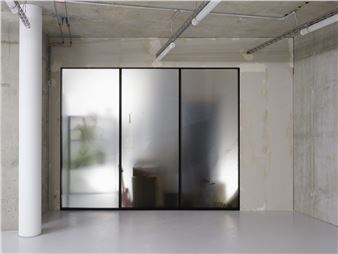Gaia Fugazza: Making Kin
American feminist philosopher Donna Haraway, in her essay Chthulucene. Surviving on an Infected Planet, reiterates the importance of generating kinship, вҖҳmaking kinвҖҷ.
Although it lacks an equivalent in the Italian language, kin stands for вҖҳconsanguineousвҖҷ, вҖҳrelativeвҖҷ, вҖҳlineageвҖҷ and вҖҳdescendantsвҖҷ, a term that evokes the human awareness of being part of a common substance and therefore the importance of establishing intimacy with all the creatures of the earth, with a view to a multi-species solidarity that employs inventive connections to succeed in living well and dying well in the present, that is, in these eras of ours that are called the Anthropocene and Capitalocene.
Making kin is a system to generate kinship of an unexpected nature, to open up to unexpected collaborations and combinations to con-create together with one another because individualism in its scientific, political and philosophical forms is no longer possible either to imagine or to put into practice. The salvation of the planet must therefore be looked at, from a post-anthropocentric perspective, as a process of sympoiesis in which there can be a multi-species rebirth.
Taking Donna Haraway as an entry point into Gaia Fugazza's artistic practice illuminates the ways in which it is aimed at creating an alternative reality, in which human bodies freely migrate into other beings and other species, while retaining their anthropomorphic aspect that goes beyond sexual difference. Her human figures escape the rigid gender dichotomy imposed by the dominant culture вҖ“ they embody new political subjectivities with non-unitary sexual identities and, as the philosopher Rosi Braidotti would say, вҖҳNomadsвҖҷ.
Within the visionary, esoteric, militant and eco-feminist artistic perspective of Gaia Fugazza's work, there is a re-appropriation of the representations of the female body in relation to other forms of subalternity such as the plant and animal worlds, with which it rediscovers a political alliance.
Gaia Fugazza's figuration draws from a remote time that resonates with her animistic and anti-anthropocentric vision, placing them within an indefinite spacial and temporal plane in which the mystery and sacred ferocity of a powerful nature is still present. The surfaces of her works are often engraved, excavated, enriched with ceramic or enamel elements, representing a primordial world in which human beings coexist with other species in a dimension of sacred reciprocity. They are shamanic images, triggered by visions that challenge the hierarchical notion of nature as dominated and domesticated by humans and their intellectual superiority.

Recommended for you
American feminist philosopher Donna Haraway, in her essay Chthulucene. Surviving on an Infected Planet, reiterates the importance of generating kinship, вҖҳmaking kinвҖҷ.
Although it lacks an equivalent in the Italian language, kin stands for вҖҳconsanguineousвҖҷ, вҖҳrelativeвҖҷ, вҖҳlineageвҖҷ and вҖҳdescendantsвҖҷ, a term that evokes the human awareness of being part of a common substance and therefore the importance of establishing intimacy with all the creatures of the earth, with a view to a multi-species solidarity that employs inventive connections to succeed in living well and dying well in the present, that is, in these eras of ours that are called the Anthropocene and Capitalocene.
Making kin is a system to generate kinship of an unexpected nature, to open up to unexpected collaborations and combinations to con-create together with one another because individualism in its scientific, political and philosophical forms is no longer possible either to imagine or to put into practice. The salvation of the planet must therefore be looked at, from a post-anthropocentric perspective, as a process of sympoiesis in which there can be a multi-species rebirth.
Taking Donna Haraway as an entry point into Gaia Fugazza's artistic practice illuminates the ways in which it is aimed at creating an alternative reality, in which human bodies freely migrate into other beings and other species, while retaining their anthropomorphic aspect that goes beyond sexual difference. Her human figures escape the rigid gender dichotomy imposed by the dominant culture вҖ“ they embody new political subjectivities with non-unitary sexual identities and, as the philosopher Rosi Braidotti would say, вҖҳNomadsвҖҷ.
Within the visionary, esoteric, militant and eco-feminist artistic perspective of Gaia Fugazza's work, there is a re-appropriation of the representations of the female body in relation to other forms of subalternity such as the plant and animal worlds, with which it rediscovers a political alliance.
Gaia Fugazza's figuration draws from a remote time that resonates with her animistic and anti-anthropocentric vision, placing them within an indefinite spacial and temporal plane in which the mystery and sacred ferocity of a powerful nature is still present. The surfaces of her works are often engraved, excavated, enriched with ceramic or enamel elements, representing a primordial world in which human beings coexist with other species in a dimension of sacred reciprocity. They are shamanic images, triggered by visions that challenge the hierarchical notion of nature as dominated and domesticated by humans and their intellectual superiority.















